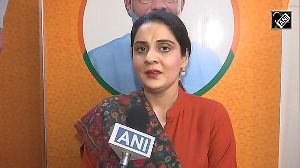Are closed-end schemes the way ahead for investors in mutual funds in India? You would certainly think so considering the fact that in the last six months, six out of 10 equity schemes launched were closed-end.
However, if you look at the performance of the existing closed-end schemes, it is far from inspiring. The returns from the Morgan Stanley Growth Fund and the equity-linked savings schemes, which reflect the locked-in nature of funds, are lower than that of their counterparts in the open-ended category - both over a three-year and five-year investment horizon (See: Figure Out Your Returns).
Even if rolling returns are considered to eliminate period bias, the schemes barely outperform the diversified equity funds. The closed-end structure also takes away investors' most potent risk-mitigation strategy in a volatile market - steady, systematic investment.
The sudden surge
The reason closed-end funds are suddenly in vogue may not have anything to do with market conditions or tailoring products to suit investor requirements better. The prologue to the resurrection of the closed-end schemes lies in the Sebi guidelines issued in April 2006, which disallowed open-ended schemes from amortising the initial issue expenses incurred in launching a new fund offer.
Earlier, all funds - closed or open - could amortise six per cent of their collections from the NFO as initial issue expenses. Such expenses have to be now borne by the AMC for all open-ended funds, while closed-end funds can still charge these.
This has made them attractive to fund houses, as it enables hiving off huge marketing costs involved in a new offering to investors. A look at the initial issue expenses charged by the recently launched closed-end schemes show that except Franklin India Smaller Companies Fund, which hasn't charged any initial issue expense, and Prudential ICICI Fusion Fund, which has charged only 3.75 per cent, all others have charged the full six per cent of the amount mobilised to the schemes. Is it a coincidence, then, that fund houses are enamoured by closed-end schemes?
Why closed-end funds?
The mutual fund industry in India seems to have come a full circle. In the late 1980s, inexperienced fund managers struggling to find investment opportunities in an equity market that was neither liquid, nor efficient found the relative stability of a closed-end fund easier to manage.
But with economic reforms, equity markets became vibrant entities that offered investors the opportunity to participate in the Indian growth story. The restricted flow of funds to closed-end schemes became a drag on the fund's ability to invest and generate returns and the industry saw a shift to open-ended schemes. Prior to April this year, of the 267 equity-oriented schemes managed by the industry, only 15, or 5.6 per cent, were closed-end schemes.
What then is the justification for closed-end schemes now? The proponents point to the need for funds with a long-term perspective to be able to generate returns in markets that are at unprecedented highs.
The bull run on the Indian stockmarkets since 2003 has fed the appetite of investors for short-term returns. The equity schemes of mutual funds have not remained unaffected by this trend. The fund managers have been under enormous pressure to manage liquidity on one hand, and generate returns on the other.
A three-month investment in highly liquid stocks like Reliance or ITC would have generated 23 per cent and 12 per cent respectively, while an investment over the same period in a less liquid stock like Eicher Motors would have generated 65 per cent returns. The choices have been tough.
Also, look at the current market scenario. Despite the dip the market took in May, there has not been a long or serious correction. With the Sensex trading above 13,000, small investors are getting jittery and looking to book their profits before the market falls.
Fund houses have been facing redemption pressure on several schemes due to this. In October, when the markets traced record highs, mutual funds were net sellers to the tune of Rs 3.51 crore (Rs 35.1 million) as their investors were redeeming their units. Meanwhile, FIIs bought Rs 8,013 crore (Rs 80.13 billion) worth of equity in the same period. This necessity to buck the main market trend in the fund manager's investing strategy can be avoided in closed-end funds.
Since liquidity pressures are removed in a closed-end fund, the fund manager can concentrate on generating returns. The other takeaway, say advocates, is lower costs since the need to churn the portfolio frequently for liquidity and short-term returns is eliminated.
Is the case closed?
Does this build a case for the closed-end fund? Not quite. A look at the performance of the MSGF and closed-end ELSSs over a five-year horizon shows that while the expenses were lower, the returns at 39.93 per cent and 45.59 per cent, respectively, were also lower than an open-ended ELSS at 56.67 per cent, or a diversified equity fund at 64.48 per cent.
Since the ELSSs are weighted in favour of mid- and small-cap stocks, which have under-performed in the last one year, one must look at the rolling returns to remove this period bias. These show they have only done marginally better. The average monthly rolling returns for top-performing ELSS ranges between 3.6 per cent and 4.5 per cent, which is comparable to that of diversified equity funds.
Also, the ELSSs had expense ratios and portfolio turnover ratios (which measure the amount of buying and selling done by the fund), comparable to that of diversified funds. Clearly, the locked-in nature of the funds has not translated into significant additional returns for the investors.
While the new closed-end funds are too recent to be evaluated, there is no reason to believe they are going to fare any better, particularly because these schemes offer limited redemption facility to the investor and will, therefore, face the same redemption pressures as the open-ended schemes during such periods.
Another important factor, at the high levels that markets are now, is that these funds do not permit periodic investing. An investor, putting in a fixed sum periodically under a systematic investment plan, gets more units when the net asset values come down due to market correction.
This enables an investor to average out the cost. To put things in perspective, a one-time investment in the Prudential ICICI Tax Plan at inception would have generated a 36 per cent return as compared to 45 per cent over the same period in case of a SIP.
The verdict
The drawbacks of the closed-end fund far outweigh the benefits, if any, to investors. The investor is better off identifying open-ended schemes with strong, consistent performance and commitment to stated investment objectives, which meet his requirements and invest in them systematically.
But for this, it is essential that investors of mutual funds be empowered with knowledge and information. The benefits of long-term investing discipline will accrue automatically to the investor and to the fund if the profile of the fund matches the investor's risk, return requirements and investment horizon.
|
A Pathfinder's Glossary | |
|
Why you should not invest |
Why you should invest |
|
|
|
None of the newly-launched schemes have chosen to list on stock exchanges | |
|
Figure Out Your Returns |
| ||
|
Scheme/ |
3-Year |
5-Year |
Expense |
|
ReturnS |
Returns |
Ratio | |
|
MSGF1 |
42.41 |
39.93 |
1.43 |
|
Closed-end ELSS2 |
46.20 |
45.59 |
0.9-2.5 |
|
Open-ended ELSS(Top 5 schemes) |
60.90 |
56.67 |
2.25-2.5 |
|
Open-ended diversified |
66.71 |
64.48 |
1.9-2.25 |
|
All figures in per cent 1Morgan Stanley Growth Fund 2Equity-linked savings scheme | |||
|
Closed-End NFOs | ||
|
Name of the Scheme |
Launch Date |
NFO Charges |
|
Franklin India Smaller Companies |
Dec-05 |
Nil |
|
HDFC Long-Term Equity |
Jan-06 |
6% |
|
Prudential ICICI Fusion |
Feb-06 |
3.75% |
|
Standard Chartered Enterprise Equity |
May-06 |
6% |
|
Tata Equity Management |
Jun-06 |
6% |
|
Tata Capital Builder |
Aug-06 |
6% |
|
ING Vysya C.U.B. |
Aug-06 |
6% |
|
Birla Long-Term Advantage |
Sep-06 |
6% |
|
UTI Wealth Builder |
Oct-06 |
6% |






 © 2025
© 2025